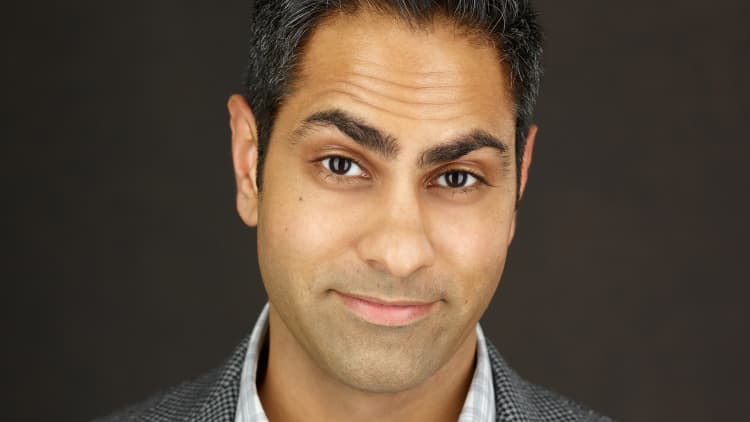I was having a stressful time, and nothing I tried helped. Not weekend escapes. Not even a month-long vacation where I disconnected from work entirely. The sense of relaxation never seemed to last for more than a couple of days.
Close friends and peers suggested I take up meditation. It was easy, they said . Just download the Headspace app.
As instructed, I woke up every morning and listened to the Headspace free 10-minute meditation session. This habit lasted for five days, at which point I rushed out the door as I always did and forgot about meditation for the rest of the year.
Later, a good friend introduced me to the Tim Ferriss podcast, which rekindled my interest in meditation. I've now made it through multiple 100-or-more-day streaks of daily practice.
And I realized: Changing my environment hadn't worked because I needed to focus on changing my mindset. That's where meditation comes in.
If you study successful individuals, you will notice that the many of them practice meditation or did at some vital point in their careers. Some of the notables who swear by meditation include:
- Professional competitors like Arnold Schwarzenegger (successful Actor, seven-time Mr. Olympia, Former Governor of California) and Josh Waitzkin (child chess prodigy and world champion martial artist) used meditation to help them train. Waitzkin in particular used meditation and visualization to compress a one-hour warm up session down to a single breath, letting him prepare for and win unscheduled matches.
- The Beatles, who practiced daily transcendental meditation and credited it for giving them increased energy
- Rick Rubin, producer for some of the greatest artists in the world such as Jay-Z, Eminem, Johnny Cash, Adele and the Beastie Boys
- Phil Jackson (11-time NBA Championship coach) and his stars Michael Jordan (six-time NBA Champion) on the Chicago Bulls and Kobe Bryant (five-time NBA champion) on the L.A. Lakers, who all meditated regularly with the help of George Mumford (heroin addict turned meditation coach). Michael Jordan used meditation to cope with distractions on the court. The recently retired Kobe Bryant, while initially skeptical, meditates every day, according to Mumford.
But how would it work for me?
Knowing this was a new habit I was attempting to form, I started with something very simple: I listened to my favorite three-minute song. That's a Tim Ferriss technique: If you look forward to hearing the song, you'll start to look forward to meditating, too.
I set a goal of daily meditation for 10 to 15 minutes every night using Headspace. Over a span of 45 days, gradually I progressed until I reached it.
These are the rough stages I went through:
Stage 1, days 0-3: Before using Headspace, I just listened to my favorite three-minute song. It worked: Because it was an enjoyable experience, it was easy to keep doing, and it made me look forward to meditation.
Stage 2, days 4-6: Drawing from research on the concept of priming written about by Dan Ariely, Malcolm Gladwell, Daniel Kahnemen, I modified my habit. I began listening to a set of upbeat songs in the morning and a set of slower songs, a mix of "Kentucky Rain," "In the Ghetto" and "Clair de Lune," before bed.
This primed my body to wake up or go to bed when I heard these songs.
Stage 3, days 6-45: Using Headspace's free trial, I began to add a 10-minute guided meditation to the end of my evening meditations. Later I progressed to a 15-minute, and then a 20-minute, session, while slowly weaning myself off of the evening music.
Stage 4, day 45 and onward: By this point, I had almost completely eliminated the music as well as the morning routine. The evening routine alone gave me the same alertness in the morning, and it also make it easier for me to go to bed.
WHAT I LEARNED
In terms of stress relief, meditation was more effective than taking a month-long, disconnected vacation
After my month-long break, my stress returned to me instantly. A simple 10-minute meditation practice a day gave me a sense of calm that lasts even when I'm not actively meditating.
Daily meditation helped build other good habits
While starting a meditation practice, I started trying to learn a language, too. Soon I was practicing Russian daily for the same 100+ day period. It turned out that getting better at one thing helped me get better at things in general.
With practice, you can make meditation "portable"
I can replicate a very short version of my meditation practice, in which I focus on my breath for 10 seconds instead of 10 minutes, and still reap very similar benefits in terms of calm and focus.
I find this very useful to during long meetings or even with something as silly as free-throw shooting: it helped me go from being only able to drain 2/10 shots to making 7/10 shots.
It started with just a three-minute song, and built up from there. Start small and you too can work your way up through consistent practice.
Daniel Rodic is the co-founder of Exact Media and Co-Host of the Connections Podcast. He was named Top 30 Under 30 by Forbes Magazine and Marketing Magazine, was named EY Entrepreneur of the Year Finalist in 2016 and represented his country at the G20 Entrepreneurs Summit in Moscow and Beijing.


